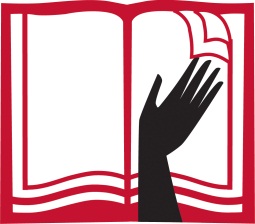Revised Common Lectionary Sundays and Principal Festivals
This lectionary provides a three-year series of readings for Sunday starting with the season of Advent, four weeks before Christmas Day. For each Sunday and festival, three readings and a psalm are suggested and include: a Gospel reading, an Old Testament reading, and a New Testament reading. The lectionary is a work of The Consultation on Common Texts, an ecumenical consultation of liturgical scholars and denominational representatives from the United States and Canada, who produce liturgical texts for use in common by North American Christian Churches.
Each year of the Revised Common Lectionary centers on one of the synoptic Gospels — Matthew, Mark and Luke. The Gospel of John is read periodically in all three years and is especially frequent in Year B.
2022/2023, 2025/2026, 2028/2029
Year A focuses on the Gospel of Matthew. The semi-continuous Old Testament readings focus on major Genesis narratives, the covenant with Moses, and the establishment of Israel in the Promised Land. The second, New Testament, readings are from Romans, Philippians and 1 Thessalonians.
2023/2024, 2026/2027, 2029/2030
Year B focuses on the Gospel of Mark with more selections from the Gospel of John than any other year. The semi-continuous readings from the Old Testament focus on the covenant of David and Wisdom literature. The second, New Testament, readings are from 1 and 2 Corinthians, Ephesians, James and Hebrews.
2021/2022, 2024/2025, 2027/2028
Year C focuses on the Gospel of Luke. The semi-continuous Old Testament readings are of prophetic proclamation chosen in chronological order and highlighting Jeremiah. The second, New Testament, readings are chosen mainly from Galatians, Colossians, 1 and 2 Timothy and 2 Thessalonians.
Numbering system for Sundays
The major seasons of Easter, Christmas, Lent and Advent are numbered sequentially for Sundays given in the particular season, for example “First Sunday of Advent.” Readings for Sundays that fall in the Time after Epiphany and Time after Pentecost are assigned to a particular range of calendar date, for example “Sunday, June 5-11” refers to the Sunday that falls between June 5 and June 11. These groups of readings are numbered consecutively beginning with the first Sunday after Epiphany (“Lectionary 1”), continuing through the time after Epiphany, resuming in the time after Pentecost, and concluding with the last Sunday after Pentecost (“Lectionary 34”).

The daily readings provide a psalm and two Scripture readings for each day between Sundays. The foundational premise of this set of daily readings is their relationship to the Sunday lectionary. The readings are chosen so that the days leading up to Sunday (Thursday through Saturday) prepare for the Sunday readings. The days flowing out from Sunday (Monday through Wednesday) reflect upon the Sunday readings. No additional readings are assigned for Sundays and festivals. From the body of daily readings for each week, selections may be made for the local context. The complete Daily Lectionary is available in Evangelical Lutheran Worship, pages 1121–1153.